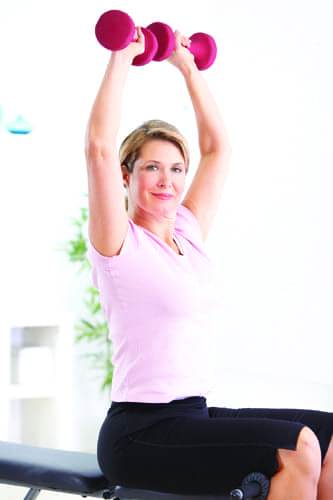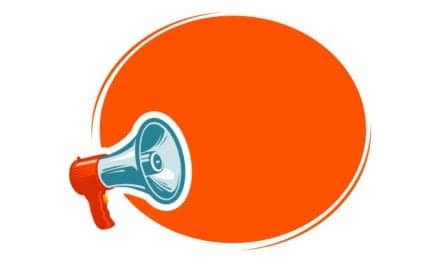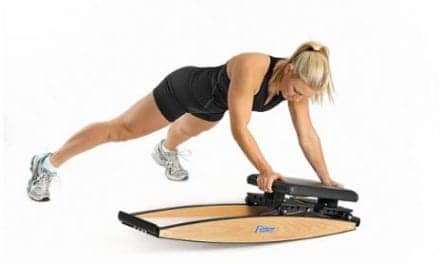The appropriate combination of an exercise treatment plan and products for physical therapy can help patients transition to a healthier lifestyle.
By Eric Kopp, PT, OMT, OCS, CSCS, FAAOMPT
The “tools of the trade” are an important part of the patient experience and physical therapy treatment plan. Every patient’s plan begins with a systematic evaluation. An accurate diagnosis identifies all contributing components to the patient’s symptoms. Getting to know the patient and how his or her tissues respond to treatment sets the stage on how to best proceed and what type of resistance training and equipment are appropriate.
A Clinical Treatment Philosophy
The philosophy we adhere to in clinical treatment is based on three pillars: high-volume exercise therapy, orthopaedic manual physical therapy (OMPT), and biopsychosocial therapy. Biopsychosocial treatment is where we treat the patient as a whole and not just the specific injured tissue. Communication is perhaps the most important part of the treatment process. The patient must feel comfortable relaying his or her level of discomfort and pain in order for the PT to adjust and prescribe a treatment plan. The PT must clearly communicate the details and reasons for specific treatment, as best results are achieved when the patient is actively involved in their course of treatment. A motivated patient will respond better to treatment than a patient who is less invested.
This clinical philosophy is strongly supported with the beliefs that our treatment effectiveness will be maximized by sound tools of our trade. One such belief strongly advocates adaptive equipment like adjustable Cardon hi-lo treatment tables to allow effective positioning and support of our patients and their respective body parts. Patients need to be well-positioned and comfortable when receiving treatment. Fixed tables are typically viewed as economical solutions to a hi-lo treatment plinth, but the lack of adequate support or adjustability of height often reduces the effectiveness of treatment of the patient and can also place the treating therapist at risk for injury.
At New England-based ProEx Physical Therapy, our clinical philosophy supports using the hi-lo treatment tables so that we can maximize our interaction with our patients. And, as health care professionals, we see firsthand that a healthy workforce means a lot of things: higher productivity, less turnover, and lower insurance premiums. We understand how essential a healthy workplace is to the success of our organization, and we want to be proactive in our workplace before injuries happen.
The use of Norwegian-based OMPT manual therapy equipment also supports our unique clinical philosophy. All of our treating therapists in each of our ProEx offices use mobilization belts to assist in application of manual techniques that often require stabilization/fixation of one body part and to augment the strength of our manual techniques to improve and maximize mobility as well as reduce pain. Using such equipment inclusive of mobilization belts, wedges, and straps strongly assists manual physical therapy practitioners of varying skill sets to work effectively with patients who come in all shapes and sizes.
Medical Exercise Therapy
Oddvar Holten, a Norwegian physical therapist, developed Medical Exercise Therapy (MET) in the early 1960s. Now, this approach is a widely recognized form of treatment in many Scandinavian and European countries, and it is slowly gaining recognition in North America. Based upon the basic tenets and principles of MET, we prescribe exercise like a doctor would prescribe medicine. We believe that exercise, if dosed and graded appropriately, can have medicine-like effects and contribute to optimal outcomes. We utilize a system of prescribed exercises tailored to the patient based on treatment diagnosis and starting levels of function. When carefully developed, high-volume exercise can help nourish and retrain muscles as well as other connective tissues with high-volume repetitive resistive motion pain-free, or as close to pain-free as possible.
Medical Exercise Therapy works best with specifically designed pulley equipment, including speed pulleys, training benches, and multiangle benches that open up a range of additional treatment and exercise options. We like the integrity and versatility that come with the Steens Physical and Cardon pulley equipment. This pulley equipment allows for an easy transition in slowly increasing the patient’s weight resistance and range of motion. The Steens Physical products were designed specifically for dosing and grading exercise and offer a wide variety of exercise options due to their variable adjustments. They also allow for extremely precise dosing of weight in very small increments when the patient has very low exercise tolerance.
Exercise and Medical Exercise Therapy
Early on, exercises are chosen to reduce pain and, whenever possible, to be performed with motion in the most comfortable positions. Movements often must be small at first and repeated slowly, with a large number of repetitions, often exceeding traditional exercise volumes. We typically strive to condition the injured tissue with 1,000 repetitions in an hour of treatment. As light resistance is added, coordination is emphasized to establish a normal movement pattern, by gradually increasing range of motion and speed of movement. Furthermore, tissue-endurance training with high-repetition exercise targets the deep stabilizing muscles while staving off tissue and joint loads or sheering forces that can often provoke symptoms and tissue irritability during exercise. This can often lead to poor exercise tolerance, and unhappy patients who feel that exercise is reinjuring their tissues.
The next phase of rehabilitation exercise aims to increase the tissue’s tolerance to stretch or compression, to meet the demands of the patient’s daily activities, whether at work or in sports. This now requires gradually progressed exercise to therapeutically pressure the involved tissue. At this stage, weight-bearing exercise is often added. The use of pulleys allows for the exercise resistance to be increased gradually and also to promote increased strength and joint protection. Functional movement patterns may now also be incorporated.
Each muscle requires specific training; bones, ligaments, tissue, spinals discs, and the cartilage in joints also all require different training. As a result, and with incorporation of an individual patient’s activities, each patient has an individually tailored exercise program.
A patient with a shoulder injury is often able to exercise within the comfortable range of motion with normal humeroscapular rhythm, and in the early phase the weight from the pulley apparatus can be used to unload some of the weight of the arm, making it possible to perform the high number of repetitions in sets (three sets of 30 repetitions is a typical dosage) with good kinetic control. As the patient improves, experiencing less pain, the range of motion and the weight resistance can be increased, and the starting position will change according to the patient’s ability to exercise in his or her available range of motion, in an active or active-assisted manner.
Tissue Reaction to Stress and Load
All tissues in the body react to stress and load differently. When the tissue load demand is greater than the capacity of the tissue, injury occurs—it is that simple. Injured athletes can choose to rest and wait to get better or continue to train at the same level. The symptoms that are generated by an injured tissue should have a pattern or expected pain pattern that reinforces this. Therefore, it makes sense to continue to actively condition just with less tissue load/demand/volume.
Rest is very important for recuperation, but active rest—meaning, small doses of restitution exercise to facilitate tissue recovery, nourishment, and, ultimately, healing—is how we choose to treat. When we see an athlete who injures their arm doing arm curls with a 50-pound dumbbell, we know that if they wait 2 days to do the same weight and exercise again, it makes sense that they will reinjure the tissue. However, if they are offered simple exercises that condition the arm in a flexion/extension movement pattern (for example, triceps pushdowns, pull-downs, seated rows, biceps curls with 10 pounds pain-free) with lighter weights and very high reps (like three sets of 30 to 40), the athlete will not reinjure the arm and will still be able to maintain conditioning.
The Path to Patient Recovery
Through active-graded exercises, patients can be put into an exercise program targeted to treat pain and increase motion, endurance, and strength as well as improve the activities of daily living. The MET system accommodates treating high-level athletes and patients of all physical levels with acute or chronic pain. Emphasis is put on optimal grading and dosing to increase the tolerance for loading and to normalize muscle imbalance and coordination. The right combination of a treatment plan and physical therapy products, or tools of the trade, can assist your patients in transitioning to a healthier and pain-free lifestyle. PTP
Eric Kopp, PT, OMT, OCS, CSCS, FAAOMPT, is the regional clinical director of the CT/Western MA region and the co-director of clinical education for ProEx Physical Therapy, Portsmouth, NH. Kopp’s teaching experience includes an adjunct faculty position at Quinnipiac University teaching in the Advanced Masters program, and he maintains an active clinical teaching regimen in topics related to orthopedic manual therapy. For more information, contact [email protected].
[sidebar]
Resistance Training Equipment Remains Strong Medicine for Rehab
A mainstay among resistance training products are those built to create resistance through the use of pulleys and weights. Pulley systems are versatile pieces of exercise equipment that allow a user to perform a variety of exercises in a number of body positions, such as sitting or standing, and can be used to exercise a majority of muscle groups. Companies that offer pulley systems for fitness and rehabilitation include Endorphin, Pinellas Park, Fla, BTE Technologies, based in Hanover, Md, and Northvale, NJ-based Hausmann Industries.
Therapeutic bands, balls, and tubing are also popular get-the-job-done tools used inside clinics as well as for resistance-based home exercise programs. Companies such as OPTP, Minneapolis, the Warminster, Pa-headquartered Stretchwell Inc, and Thera-Band, based in Akron, Ohio, offer therapy bands for resistance training. In addition to portability, resistance bands offer the user benefits such as improving balance, strengthening isolated muscle groups, and the ability to customize workouts with its versatility. Resistance bands can also aid in injury prevention and recovery.
Free weights can provide a cost-effective way to train functional movements, while weight machines allow a user to efficiently isolate muscle groups and train with heavier weights without assistance. Free weights are available from a variety of companies, such as Advantage Medical, based in Bolingbrook, Ill, and Exertools, headquartered in Petaluma, Calif.
For clinics looking to add the benefits of larger resistance machines, Total Gym, San Diego, and Nautilus Commercial from Med-Fit Systems Inc, Fallbrook, Calif, manufacture and distribute this type of equipment. Utilizing free weights or weight machines as part of a resistance training program can help the patient increase physical strength, and resistance training overall provides a valuable tool for rehabilitation professionals.
—Cassandra Perez
[/sidebar]





